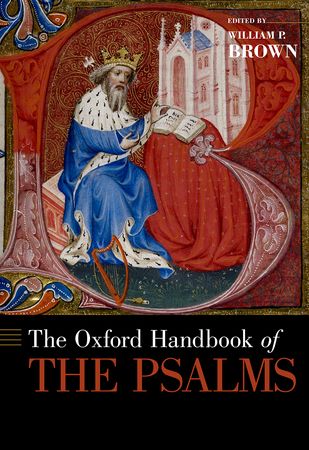The recently released Oxford Handbook of the Psalms represents an impressive encyclopedia of Psalms scholarship. The volume includes ten sections (with an additional two appendices) produced by over forty experts in their respective disciplines. In the following review, I will introduce the reader to the book’s structure and contents by examining a cross-section of the entries it contains.
Sections I-III
The opening section contains entries on Mesopotamian, Canaanite, and Egyptian backgrounds to the Psalter. Bernd Schipper’s contribution, “Egyptian backgrounds,” is an especially accessible entrée into the subject (57-75). He provides the reader with numerous thematic and linguistic parallels, which are formatted in a series of well-illustrated charts. As a general conclusion, he eschews the view that the Psalms evince a surplus of direct literary dependence on Egyptian texts, concluding instead, “[these resemblances] have to be seen as a common treasure of motifs that originate as part of the ancient Near Eastern conception of the world” (58). Section II focuses on the language of the Psalms. This includes attention to poetics, genre, and more. From here, Section III considers various translations of the Psalter. Joachim Schaper’s contribution, “The Septuagint Psalter,” takes on the question of the provenance, date, and translation techniques of a diverse set of documents which are collectively referred to as “the Septuagint” (173-184). The reader may be interested to know that Schaper rejects Albert Pietersma’s “interlinear model,” opting instead for a view that places a greater emphasis on these texts as exegetical literature (176-77).
Sections IV-VI
The fourth section of the volume is dedicated to the “composition of the Psalms.” While all three contributions are outstanding, Peter Flint’s chapter, “Unrolling the Dead Sea Psalms Scolls,” is particularly good (229-250). Essentially, he offers the reader a diachronic survey of the DSS’s contribution to our understanding of Psalter, which concludes with an authoritative synthesis of all the relevant data. In Section V, Alan Cooper’s essay, “Some Aspects of Traditional Jewish Psalms Interpretation,” leads off a number of fine contributions to our understanding of the Psalter’s reception history (253-268). In four blocks, Cooper surveys the reception history of the Psalms in Judaism from the late Second Temple period all the way through the 18th century. While Cooper gives adequate weight to “eschatological interpretation,” as attested by the Scrolls and the New Testament, he amply demonstrates that this was “only one of many roads taken by later interpreters” (255). Section VI, “Interpretive Approaches,” is by far the most diverse sections in the book, with contributions spanning from “Psalms and the Question of Genre” (William Bellinger Jr., 313-25) to “Feminist Interpretation of the Psalms” (Melody D. Knowles, 424-36).
Sections VII-IX
Section VII of the book explores a number of “culturally based interpretations.” Edesio Sanchez’s essay, “Psalms in Latin America,” surveys the evocative power that the Psalter has had in Latin America (475-81). Particularly interesting is his assessment of the rich tradition of paraphrasing the Psalms in Latin American (477-8). Section VIII, “Theologies of the Psalms” and Section IX, “Anthropologies of the Psalms,” are the shortest in the volume—each with two contributors. In Section VIII, Rolf Jacobsen takes up the task of expositing a Christian theology of the Psalms (499-512). Jacobsen offers a typology of three major streams of approaches to the Psalter: historical-reconstructive, canonical-narrative, and key concept. Of the three, Jacobsen advocates the third on the grounds that “[it] promises to draw out of the psalms themselves a theological lens that can aid in the interpretation of individual psalms and psalm texts” (506). In Section IX, Walter Brueggemann explores the nature of “humanity” in the Psalms (515-28). He avers that the Psalms provide “a daring range of poetic extremities that witness to a risk-taking, subversive notion of humanness” (515).
Section X
The final section rounds off the project by focusing specifically on issues of praxis. Thomas Long’s entry, “Preaching Psalms,” offers a number of helpful guidelines for preaching the Psalter (557-568). In particular, he focuses on how content and movement can guide the preacher’s decision in presentation. Another exciting contribution is David Rensberger’s essay, “Ecological Use of the Psalms” (608-620). Rensberger believes that the Psalms provide essential resources for much needed change. Within the Psalter, we see a portrait of humanity that is entangled with the rest of God’s good creation.
Summary
As this review attempted to demonstrate, The Oxford Handbook of the Psalms delivers exceptional scholarly treatments of an astonishingly wide-ranging body of material. While all readers are guaranteed to encounter material that will stretch beyond their expertise, this volume seems particularly suitable for preachers, teachers, and students. Those who choose to invest in this resource will not be disappointed!
Review by Max Botner (mb274@st-andrews.ac.uk)
University of St Andrews





Leave a Reply
Your email is safe with us.